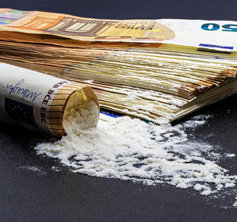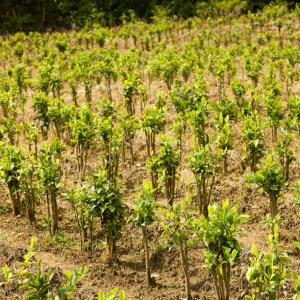An In-Depth Analysis of the Cocaine Market in Europe

Introduction
Cocaine, a powerful stimulant drug, has long been a significant concern for law enforcement and health professionals worldwide. In Europe, the cocaine market has been growing and evolving, posing new challenges and threats. A comprehensive report by the European Monitoring Centre for Drugs and Drug Addiction and Europol provides an in-depth analysis of the European cocaine market, from production and trafficking to distribution and use.
Cocaine Use in Europe: A Growing Concern and Narconon’s Response
Cocaine, a potent stimulant drug, has become the most commonly used illicit substance of its kind in Europe. The report by the European Monitoring Centre for Drugs and Drug Addiction and Europol estimates that approximately 14 million adults in the European Union, aged between 15 and 64, have experimented with cocaine at some point in their lives. In the last year alone, about 3.5 million individuals have used the drug, indicating a concerning prevalence of cocaine use.
The use of cocaine is not uniform across Europe and varies significantly between countries. It is most prevalent in the southern and western regions of Europe, suggesting regional differences in drug use patterns, availability, and perhaps cultural attitudes toward drug use.
This widespread use of cocaine is not just a statistic—it represents millions of lives affected and underscores the urgent need for effective prevention and treatment strategies. It is a call to action for organizations like Narconon, which are on the front lines of addressing drug addiction.

At Narconon, we see firsthand the impact of this widespread cocaine use. Many of the individuals who come to us for help are struggling with cocaine or crack cocaine addiction. These are not just numbers—they are people with lives, families, and dreams who have been caught in the grip of addiction.
We also see the ripple effects of cocaine use on families and communities. The emotional, social, and economic costs are immense, affecting not just the individuals using the drug but also those around them. This reality reinforces our commitment to providing effective, holistic treatment and prevention programs.
Cocaine Production and Trafficking: An In-Depth Examination
Cocaine, a potent stimulant drug, is primarily trafficked to Europe from the producer countries of South America. This trafficking is carried out through a variety of means, but air and sea routes are the most commonly used. The scale of this operation is immense, as evidenced by the record-breaking seizure of 214.6 tonnes of cocaine in 2020 across the EU, Norway, and Turkey. This figure represents a significant increase in seizures, highlighting the growing challenge faced by law enforcement agencies.
Three countries, in particular, stand out in this context: Belgium, the Netherlands, and Spain. Together, these nations accounted for approximately 73% of the total seizures, marking them as major entry points for cocaine into Europe. These countries' geographical locations, with access to sea routes and proximity to other European nations, make them strategic points in the cocaine trafficking network.
However, the report goes beyond just the trafficking of cocaine and delves into the production of the drug. Interestingly, it notes that cocaine processing is not confined to South America but is also taking place within Europe itself. This is a significant development, indicating the evolution and adaptation of criminal networks involved in the cocaine trade.
Large seizures of chemicals, particularly ethyl acetate, which is commonly used in the production of cocaine, have been made in Europe. This suggests that criminal networks are setting up cocaine processing labs within Europe, closer to the end consumer market. This development not only reduces the risks associated with long-distance trafficking but also allows these networks to have greater control over the quality and purity of the product.
This shift towards local production represents an increasingly sophisticated operation by criminal networks. It underscores the need for enhanced surveillance and intelligence to identify and dismantle these labs. It also highlights the importance of international cooperation and information sharing, as the fight against the cocaine trade is a global challenge that requires a coordinated global response.
The Value of the Cocaine Market: A Closer Look

The cocaine market’s financial implications are not just significant—they are staggering, reaching into the billions of euros. According to the European Monitoring Centre for Drugs and Drug Addiction (EMCDDA), the European Union’s cocaine retail market was valued at a minimum of EUR 10.5 billion in 2020. This colossal figure is not just a testament to the scale of the cocaine trade, but also a stark reminder of the vast profits that are being generated from this illicit activity.
This EUR 10.5 billion figure represents approximately a third of the total illicit drug market in Europe, making cocaine the second-largest market, trailing only behind cannabis. The size of the cocaine market is indicative of the high demand for the drug across the continent. It also reflects the high street price of cocaine, which is typically more expensive than many other illicit substances.
The vast sums of money involved in the cocaine trade have far-reaching implications. The immense profits generated by this illicit trade are often used to fund other criminal activities, creating a vicious cycle of crime and illicit profit. These profits can also lead to corruption, as those involved in the trade have the financial resources to bribe officials and evade law enforcement.
Moreover, the cocaine trade is often associated with violence. Disputes over control of the lucrative market can lead to violent confrontations between rival trafficking groups. This violence can spill over into the wider community, impacting the safety and security of innocent bystanders.
Furthermore, the wealth generated by the cocaine market can lead to social inequality and destabilization. In regions where cocaine production or trafficking is prevalent, the influx of illicit wealth can distort local economies and exacerbate social disparities.
The value of the cocaine market is not just a measure of the scale of cocaine use in Europe. It is also a reflection of the broader social and economic impacts of the cocaine trade. The vast profits generated by this illicit trade fuel a range of harmful activities, from corruption and violence to social inequality and economic destabilization. As such, efforts to tackle the cocaine trade are not just about reducing drug use, but also about addressing these wider societal issues.
Health Risks Associated with Cocaine Use

Cocaine, a potent stimulant, is known for its temporary mood-enhancing effects, but it is also associated with serious health risks, particularly when used regularly. Among these health risks, dependence is a major concern. Individuals who use cocaine may develop a physical and psychological reliance on the drug, which can cause intense cravings, withdrawal symptoms, and an inability to function properly without the substance.
Moreover, cocaine is known to exert a significant toll on the heart. It causes constriction of blood vessels, increased heart rate, and elevated blood pressure. Such cardiovascular strain can lead to arrhythmias, myocardial infarction (heart attack), and even sudden cardiac arrest. The stimulant nature of cocaine puts excessive stress on the heart, making it work harder and faster than it normally would, and this can be extremely dangerous, especially for those with pre-existing heart conditions.
Mental health problems are also commonly associated with cocaine use. Individuals may experience anxiety, paranoia, mood swings, and depression. In some cases, cocaine can induce psychosis, where users lose touch with reality and may experience hallucinations or delusions. This can be particularly distressing and dangerous for the individual and those around them.
Additionally, the use of cocaine can impair judgment and coordination, increasing the likelihood of accidents and risky behavior. This might include engaging in unsafe sexual practices, reckless driving, or involvement in violence. The altered mental state that cocaine creates often causes individuals to underestimate risks and overestimate their own capabilities, leading to a higher propensity for dangerous actions.
The combination of cocaine and alcohol is particularly hazardous. When used together, the body produces a metabolite called cocaethylene, which has more toxic effects on the heart than either cocaine or alcohol alone. Cocaethylene also has a longer duration of action, increasing the duration of the harmful effects on the cardiovascular system. This combination greatly enhances the risk of sudden death compared to using either substance independently.
Furthermore, the mode of consumption of cocaine can compound the health risks. Cocaine injection, for example, carries the risk of contracting blood-borne infections like HIV and hepatitis from sharing needles. Crack cocaine, which is smoked, can lead to respiratory problems, including chronic bronchitis and lung infections.
In 2020, a staggering 473 cocaine-related deaths were recorded in just 20 countries, and this figure is believed to be a mere representation of the global toll. This alarming number emphasizes the deadly consequences of cocaine use and highlights the urgent need for education, prevention, and treatment strategies to combat this escalating public health issue.
Addressing the Cocaine Threat: Recommendations and Narconon’s Role

The report culminates with a series of recommendations designed to tackle the current challenges presented by the cocaine market and to bolster readiness for impending issues. These recommendations encompass enhancing intelligence gathering, fortifying measures to curtail supply and boost security, intensifying international collaboration, investing in the development of skills and resources, and reinforcing policy, public health, and safety responses.
In this context, the role of organizations like Narconon becomes increasingly significant. As a part of the broader strategy, Narconon’s drug rehabilitation and prevention services contribute to the public health response by helping individuals overcome addiction and educating communities about the dangers of drug use.
The report underscores the necessity for systematic surveillance of cocaine processing labs, amplified efforts to identify and understand the criminal networks involved in cocaine production, trafficking, and distribution, and the fortification of public-private partnerships to disrupt the cocaine trade. Here, Narconon’s commitment to raising awareness about the realities of the drug trade and its impact on society aligns with the broader goal of disrupting the cycle of drug abuse and trafficking.
In essence, while the report provides a roadmap for addressing the cocaine threat at a macro level, Narconon’s work is a testament to the importance of micro-level interventions, demonstrating how individual recovery and community education can contribute to the larger fight against the cocaine trade.
Conclusion: Narconon Europe’s Role in Addressing the Cocaine Market
The cocaine market in Europe is a multifaceted and dynamic problem with profound consequences for public health, law enforcement, and society at large. The detailed report by the European Monitoring Centre for Drugs and Drug Addiction and Europol offers invaluable insights into this market, underscoring the necessity for unified and coordinated efforts to confront this persistent issue.

Against this backdrop, the work done by Narconon Europe is of paramount importance. As a leading organization in drug rehabilitation and prevention, Narconon Europe plays a vital role in the public health response to the cocaine market. By helping individuals overcome addiction and educating communities about the dangers of drug use, Narconon Europe contributes to the broader efforts to mitigate the impact of the cocaine trade.
As we progress, it is essential that we persist in monitoring, understanding, and responding to this threat to safeguard the health and safety of our communities. In this endeavor, the role of organizations like Narconon Europe, which work on the front lines to help individuals affected by drug addiction, cannot be overstated. Their work not only aids in individual recovery but also contributes to the larger societal goal of combating the cocaine market.


